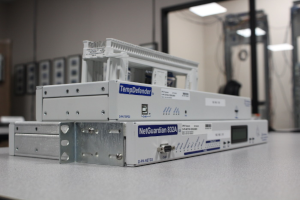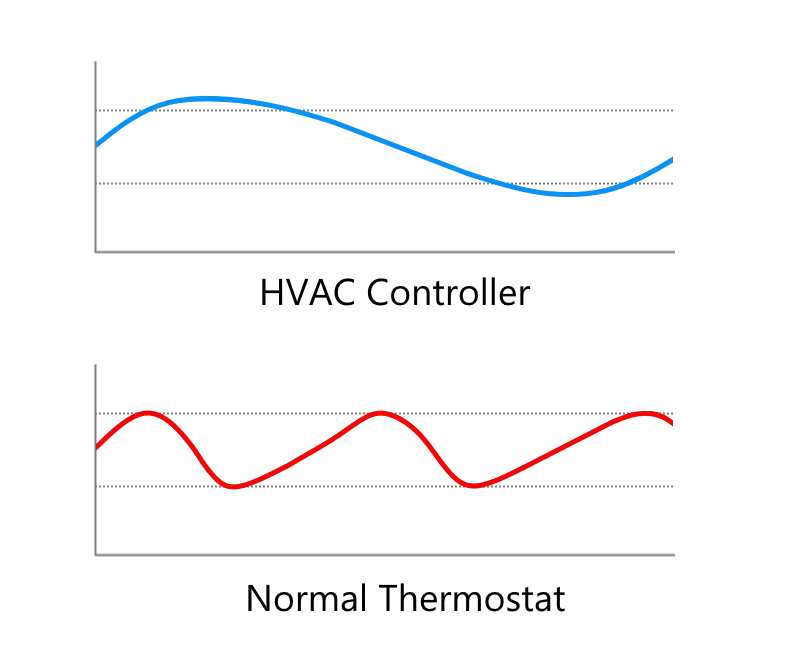Check out our White Paper Series!
A complete library of helpful advice and survival guides for every aspect of system monitoring and control.
1-800-693-0351
Have a specific question? Ask our team of expert engineers and get a specific answer!
Sign up for the next DPS Factory Training!

Whether you're new to our equipment or you've used it for years, DPS factory training is the best way to get more from your monitoring.
Reserve Your Seat TodayNot all HVAC controllers are created equal. That may sound obvious, but it's still important.
If you're managing a network of unmanned telecom huts, power substations, or any remote infrastructure, the wrong HVAC controller can be a big problem. Unmanned sites with poor monitoring & control will quickly translate into lost uptime, premature equipment failure, and rising energy bills.
Keep in mind, most HVAC control systems are designed with consideration for building automation. You, however, need a control system that's purpose-built for autonomy, resilience, and intelligent behavior in a remote installation.
At DPS Telecom, we work with our clients to deploy HVAC controllers that just work - even under punishing field conditions. Through all those installations, we've identified six critical features that determine whether an HVAC controller succeeds or becomes an expensive headache.
Let's walk through all six - and how you can use this knowledge to protect your sites going forward.

This compatibility is your foundation. If a controller can't interface cleanly with your current HVAC units, it doesn't matter how fancy the feature set is - it's not the right fit.
In most networks, you're dealing with a mix of HVAC technologies. Some units are newer with digital interfaces. Others may be older, analog-controlled (or relay-controlled) systems that are still running. Some are even legacy models installed over a decade ago.
The right controller doesn't ask you to overhaul your infrastructure. Instead, it supports:
You want a solution that lets you extend the life of your current equipment - not replace it.
If you've ever replaced a piece of equipment just because it didn't "play nice" with a new controller, you know how painful that can be. Avoid that entirely by opting for compatibility upfront.
Every HVAC cycle costs you money. The longer your units run - and the more frequently they cycle - the faster your power bill climbs and your hardware wears down.
Traditional thermostats simply react. When the temperature hits a threshold, the HVAC kicks on. That basically works, but it's a recipe for inefficiency in the real-world. This is particularly inefficient when units are never rotated or start unnecessarily.
What you really need is a system that thinks about energy.
Look for HVAC controllers that come equipped with features like:
In real-world deployments, features like these have helped cut energy use by 10-30%, depending on ambient conditions and site configuration. Multiply that by dozens (or hundreds) of sites, and the savings speak for themselves.
The beauty of this system isn't just that it saves money. It also gives you control over your cooling philosophy. Want longer cycles for smoother performance? Set it. Need tighter thresholds during peak summer? Adjust whenever you need to do so. You're in charge.

Off-the-shelf HVAC controllers often have a limited set of behaviors. But remote infrastructure is unpredictable. Your controller needs to respond intelligently to more than just the temperature.
You might need to:
These become standard operating procedures for many of our clients once they're using the right HVAC controller.
That's why the DPS HVAC Controller offers both remote web logic configuration and on-device touchscreen access. You can build your sequence, push it to all your sites, and override it locally if needed.
This ensures that your HVAC Controller executes your desired actions, even during a communications outage.
The more your HVAC controller knows, the better it can perform.
The DPS HVAC Controller supports:
Let's say you have three temperature zones at a remote site. You can daisy-chain D-Wire sensors hundreds of feet using a single twisted-pair cable (ex. Cat5e). That saves you time, labor, and cost.
The real value, though, lies in actionable intelligence. When your controller sees that Zone 1 has a tripped smoke/heat detector, it can respond. In the DPS HVAC Controller, this means deactivating HVAC units to avoid literally fanning the flames.
You already have systems in place to monitor your gear. Why wouldn't your HVAC controller be part of that network?
Too many HVAC control setups force you into siloed software that doesn't talk to your RTUs or master stations. That means missed alarms, slow response times, and poor visibility.
DPS HVAC Controllers solve this with native integration, offering:
Imagine receiving an SNMP trap the moment a lead HVAC unit fails - or getting an alert when a temperature threshold is breached at a remote hut. With DPS HVAC Controllers, that's a standard function.
If you're managing dozens of sites from a central T/Mon server, HVAC alarms appear right alongside generator failures, door entries, and power outages. This way, you get one dashboard for total control.
Many HVAC controller vendors take your money, ship the box, and move on. When you face an issue six months later, you're on your own.
That's not how we do business at DPS.
When you buy from us, you get:
And if you need something truly unique - a firmware tweak, a relay expansion, or integration with non-standard equipment - our engineers are just a phone call away.
We've helped clients with builds that combine legacy HVACs, solar power, and non-traditional enclosures. Whatever your challenge, we've probably seen it - and solved it.
Once you've chosen the right controller, the next step is deploying it effectively.
Here's how we recommend rolling it out across your network without creating disruption or unplanned costs:
Start with a basic survey. Walk your sites (or review notes) and ask:
Even simple observations can reveal major inefficiencies. One client we worked with realized their lead unit had run for over a year straight without rotating. It was no surprise it failed prematurely.
Next, think about what you might be missing:
These gaps aren't just inconvenient. They're also expensive. Filling them in is where a smart HVAC system pays for itself.
Don't guess your way through this. Call DPS.
Our team will:
You'll walk away with a plan that's easy to present internally and fast to implement.
Most DPS HVAC Controllers can be:
We also provide free training and remote support during install. If your team gets stuck, we're just a phone call away.
Once you're set up, you can grow without major rework:
DPS controllers evolve with you - backed by lifetime support and new firmware options as your needs change.
You can't "babysit" every site. But with the right HVAC controller, you won't have to.
Instead of worrying about heat, equipment wear, or unexpected truck rolls, you'll get real-time alerts, smart automation, and full visibility. It doesn't matter where you are.
DPS Telecom HVAC Controllers are engineered for exactly this kind of mission-critical work.
You're not just buying a product. You're gaining a partner.
Call us now: 559-454-1600
Or email: sales@dpstele.com
We'll help you plan your system, configure your gear, and keep it running for years to come.

Andrew Erickson
Andrew Erickson is an Application Engineer at DPS Telecom, a manufacturer of semi-custom remote alarm monitoring systems based in Fresno, California. Andrew brings more than 18 years of experience building site monitoring solutions, developing intuitive user interfaces and documentation, and opt...